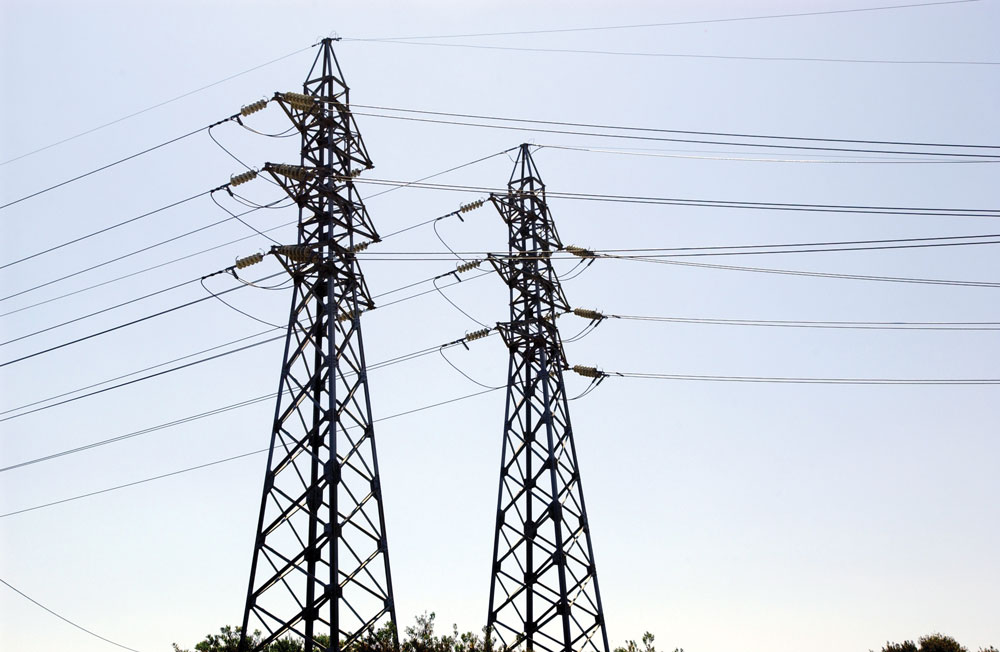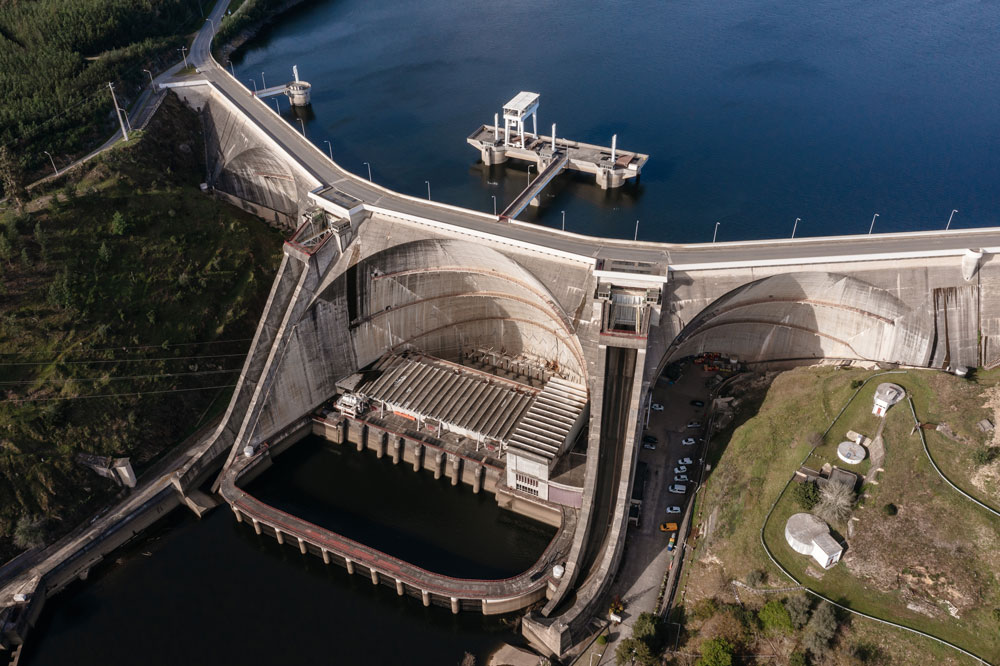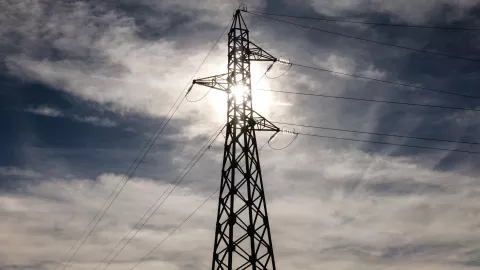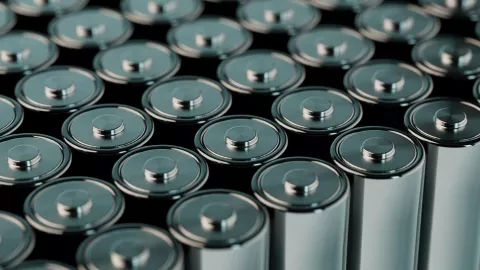EDP Generation has two different storage technologies at its disposal: pumped storage, operating on a larger scale and more mature technologically; and battery-based storage, included in hybridization projects.
In addition to producing renewable energy, hydroelectric power plants contribute to the flexibility and security of the electricity system, promoting more efficient management of the power grid during peak demand or periods when other non-dispatchable sources - such as solar and wind - are not available.
In addition to other features, dam reservoirs have the capacity to store energy - whether long term, between seasons, or for shorter periods, in some cases in the form of pumped storage.
Pumped storage is done in hydroelectric power plants equipped with reversible turbines, making it possible to use surplus energy - which is not being fed to the grid and used by consumers - to pump water in the opposite direction to production and thereby refill the upstream reservoir. That water is stored until consumption justifies putting the turbine back in generation mode.
Pumped storage represents 90% of the planet’s electrical energy storage.
EDP Generation in Portugal, Spain, and Brazil operates 68 hydroelectric power plants, with a combined installed capacity of around 7,000 MW. In the Iberian Peninsula, 10 are equipped with reversible turbines. Dams are true drivers of the energy transition and one of the key focuses for EDP on its path to becoming a 100% green energy company by 2030.
Furthermore, hydroelectric power can be considered a sustainable and with low emissions source of electricity, especially if it follows certain fundamental principles of planning, design, construction, and operation.
EDP Generation is currently exploring opportunities at the Iberian level to boost the use of this technology, studying the optimization of existing pumped-storage systems, power increases, and conversions.
This work is being carried out by the Engineering Department and Hydropower Asset Optimization and Management Department teams. It includes surveying operations throughout the Iberian Peninsula, evaluating conventional and/or more sophisticated solutions, as well as the detailed study and execution of the resulting projects.
There are two projects currently underway: the conversion of Alto Lindoso, which involves replacing a conventional turbine group with a reversible one; and the optimization of the Torrão reversible turbine, which involves the replacement of the drive wheel to increasing efficiency in both turbine generator and electric pump mode.
Pumped storage accounts for almost all of the planet’s energy storage: 100% water, 100% natural.

Battery Storage and the Alqueva Floating Solar Power Plant
We now know that battery storage systems are a vital component of any flexible energy generation system.
The incorporation of a battery storage system in the Alqueva’s Floating Photovoltaic project was decided with the understanding that the market design would have to evolve to incorporate these and other new renewable generation assets. The main objective was to test its compatibility with the 5 MWp FPV platform and with the hydroelectric power generation and pumped storage system.
The various components of the Alqueva storage system were developed in partnership between EDP Generation, Hitachi Energy, Chinese battery manufacturer CATL, and renowned U.S.-based EPC.
Alqueva’s multi-functional batteries could cover up to 10% of the floating facility’s daily production, in daily loading and unloading cycles.
At the moment, the electricity generated by the floating platform feeds Alqueva’s ancillary systems and is sold on the market. The installation of the batteries in this solar-hydroelectric system will provide the opportunity to test a wide range of functionalities. The results will become a learning experience and a benchmark for future projects.
Once this system has been assembled and put into operation, the entire plan made in 2019 will finally be realized: a solar power plant and a battery-based storage system in the natural environment of a hydroelectric power plant, sharing the same grid connection point.
The Floating Solar Power Plant project in Alqueva involved a lengthy studying and licensing phase and prompted new legislation. It was the first Portuguese project to be officially recognized as a hybridization and opened the door for many more to come.

Algorithm-Driven Batteries
In addition to delivering energy to the grid, the batteries will be able to work in various operating modes. A decision-making algorithm will be used to choose the most economically rational mode at each moment:
- Price arbitrage: Buying and selling energy to the grid to take advantage of the price difference, as happens with pumped hydroelectric energy storage facilities.
- Solar plant load shifting: Similar to the previous mode, it allows energy that would otherwise be sold at very low prices to be stored and fed into the grid when prices are higher (during peak demand).
- Market deviation minimization: In this mode, the short-term storage battery can be used to smooth out the production curve of the floating solar plant, ensuring that short-term production variances—due to weather conditions, for example—are compensated for.
In addition, the battery can also be programmed to meet the power plant’s ancillary consumption.
edpON magazine
Read more in our magazine
edpON magazine is a premium, global and up-to-date publication to highlight the drive, talent and energy within EDP. A cohesive element for the 13,000 employees around the world, it reinforces our culture and purpose. And, at the same time, an amplifier of the company's achievements among external audiences.


